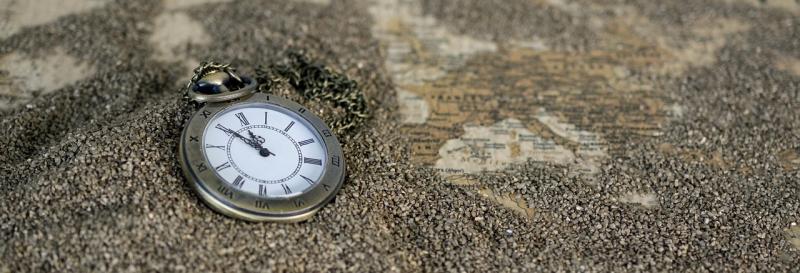
In the immediate aftermath of the bi-monthly meeting of the MPC held in June this year, announcing a hefty 50 basis points cut in the policy rate coupled with a shift in the stance to ‘neutral’, the scope of any further easing in the current policy cycle was seen as limited.
Inflation has moderated but it may not remain benign for long. Tariffs are also a factor of uncertainty
However, things changed subsequently, first with the release of inflation data for the month of June on July 14, highlighting a decline in CPI headline inflation for the eighth consecutive month to a 77-month low of 2.1 per cent in that month and then with the shock announcement of imposition of a 25 per cent tariff by the US on Indian exports on July 30.
As the headline inflation was very close to the lower bound of the (4+/- 2) per cent inflation targeting framework and the tariff hike was likely to adversely impact the country’s GDP growth and employment, at least in the short term, quite a few analysts and market observers expected a slashing of the rate by 25 basis points in the August meeting.
The imposition of a cumulative 50 per cent tariff on most of the US$ 87 billion of yearly exports, equivalent to 2.2 per cent of India’s current GDP, to the US is unprecedented by all accounts and is akin to a trade embargo
However, the MPC’s unanimous decision to keep unchanged both the policy rate as well as the stance belied these expectations. The ‘wait and watch’ approach underlying the MPC’s policy announcements reflects realism and maturity.
Reasons behind ‘no change’
The significant decline in inflation in June this year has been mainly attributed to a favourable base effect and decline in inflation of vegetables, pulses etc. High-frequency price indicators signal a continuation of the lower price momentum in food prices to July as well. Fuel group inflation moderated over two successive months to record 2.6 per cent in June.
However, core inflation, which remained within a narrow range of 4.1-4.2 per cent during February-May, increased to 4.4 per cent in June, partly driven by a continued increase in gold prices. Going forward, the headline CPI inflation is expected to cross the 4 per cent target in Q4:2025-26, and then moving up to 4.9 per cent in Q1:2026-27. In other words, the headline inflation is not likely to remain in the current ‘benign’ territory for too long in the future.
If one sets aside the tariff-related headwinds, the outlook for growth is fairly strong and stable. Among other supporting factors, above-normal southwest monsoon this year, in terms of both spatial and temporal progress, rising capacity utilisation in the manufacturing sector, increasing to 77.7 per cent in Q4:2024-25 from 75.4 per cent in the previous quarter, and Services PMI increasing to an 11-month high of 60.5 in July 2025 portend well for growth prospects.
The headline inflation is not likely to remain in the current ‘benign’ territory for too long in the future
The RBI’s latest bi-monthly survey conducted in July 2025 indicates improvement in both urban and rural consumer confidence. Growth projection for 2025-26 has been kept unchanged at 6.5 per cent by the MPC.
Monetary policy action’s transmission to the real economy involves a time lag. The impact of the cumulative rate easing by 100 basis points so far, including the front-loaded 50 basis point cut in the June meeting, is still unfolding.
The 50 per cent tariff would apply to 67 per cent of India's exports to the US, implying that US$ 58 billion is under immediate threat
Downward pressure on the exchange rate of the Indian rupee vis-a-vis the US dollar has been witnessed in the wake of the announcement of a steep tariff hike by the US administration on July 30. The rupee again fell to its all-time low of 87.88 against the US dollar on August 5, 2025 when the MPC deliberations were on. To give a perspective, the US dollar index remained more or less unchanged during the last one week or so. With the Federal Reserve keeping its policy rate unchanged in a range between 4.25 per cent to 4.5 per cent in its last meeting held on July 30, any slashing of the policy rate by MPC would almost certainly put further pressure on the rupee.
Path ahead
The imposition of a cumulative 50 per cent tariff on most of the US$ 87 billion of yearly exports, equivalent to 2.2 per cent of India’s current GDP, to the US is unprecedented by all accounts and is akin to a trade embargo. Needless to say, the path ahead for both monetary and fiscal policies is going to be challenging for the rest of 2025-26 and beyond, as a consequence.
Any slashing of the policy rate by MPC would almost certainly put further pressure on the rupee
As per some analysts, the 50 per cent tariff would apply to 67 per cent of India's exports to the US, implying that US$ 58 billion is under immediate threat. Only pharmaceutical and electronics exports, roughly 30 per cent of India's US shipments, remain exempt for now. Available estimates of the first- and the second-round impacts of the tariff on India’s growth and employment carried out by analysts differ a lot and the RBI has rightly declined to announce its own position on this.
More importantly, it has steered clear of taking any hasty or knee-jerk measures to counter the impact of the steep tariff hike. Although some mid-way solution to the tariff issue is still possible, it is quite certain that after a careful impact assessment is made in this regard by the government and the RBI, concerted monetary and fiscal actions will unfold later in 2025-26. Another 25 to 50 basis points cut in the policy rate seems possible.



